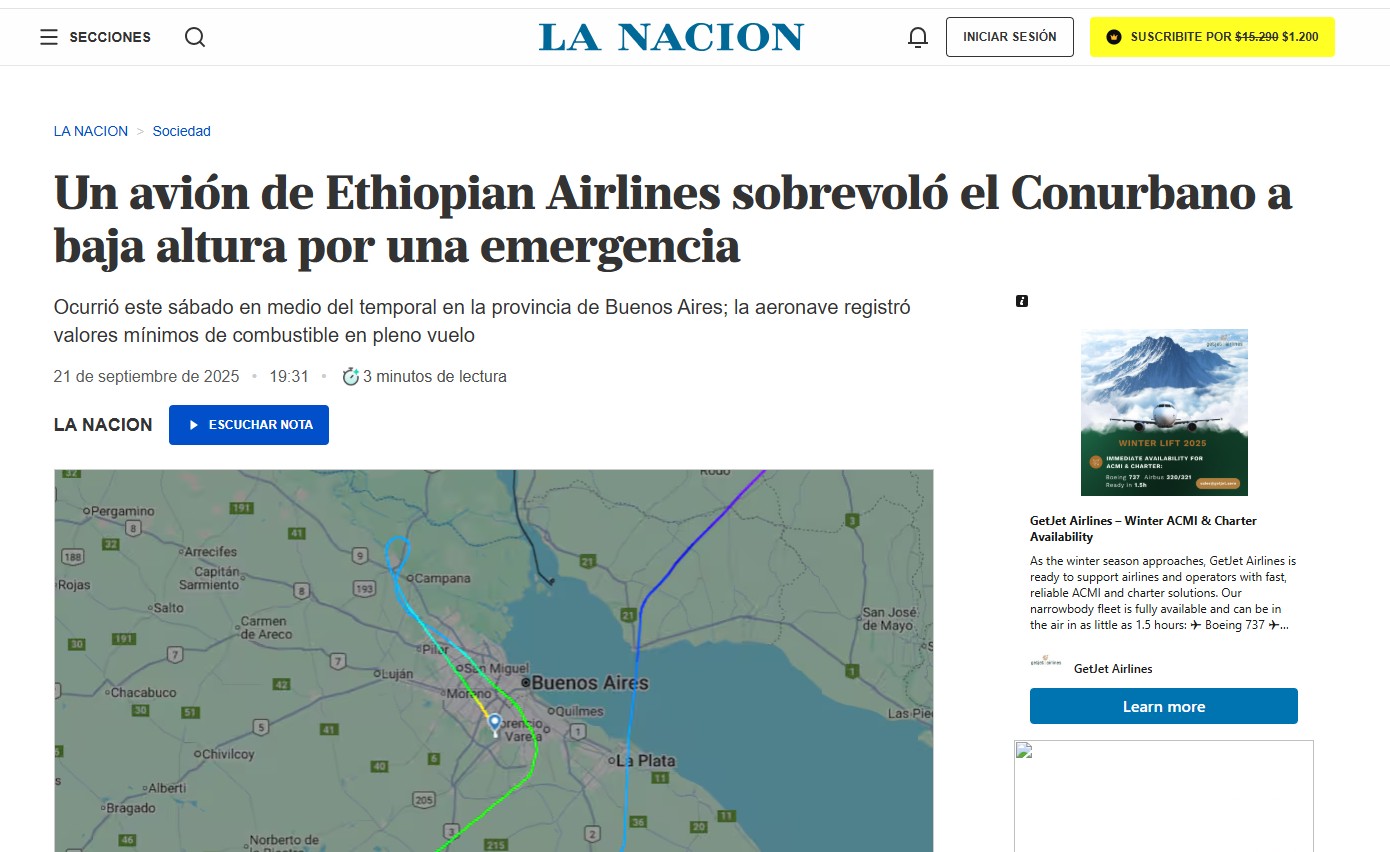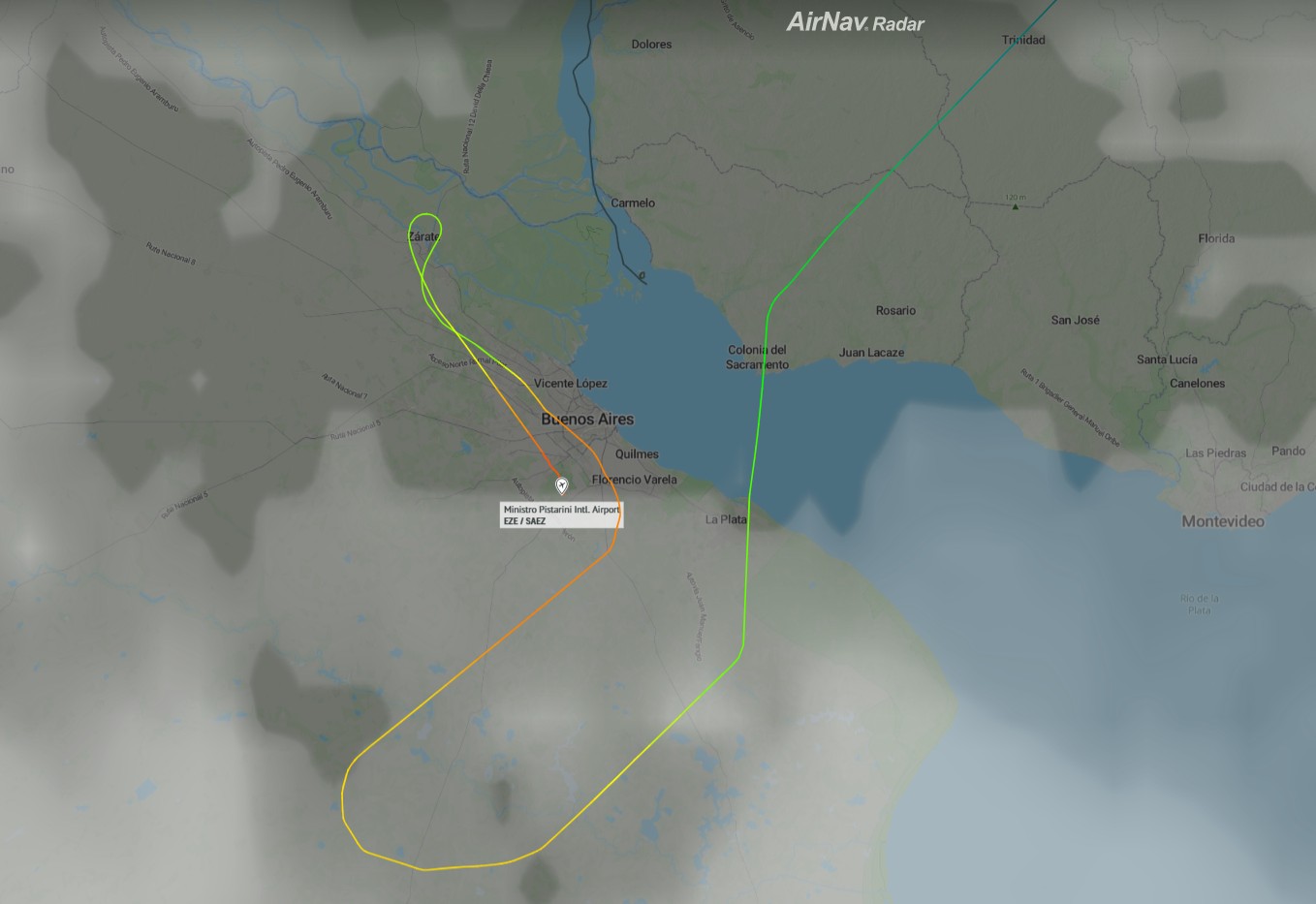Details of the Ethiopian Airlines flight that flew over Buenos Aires and grabbed headlines
An Ethiopian Airlines flight became a leading story on major Argentine news portals over the weekend after the aircraft performed low-altitude maneuvers over densely populated areas of Buenos Aires before landing at Ezeiza International Airport (EZE).
The incident, involving a Boeing 777-200LR operating flight ET506 from São Paulo (GRU), was widely covered by local media outlets such as La Nación, Clarin, and other high-traffic news sites. The focus was on the aircraft's unusual flight path, which took it over the municipality of La Matanza, part of the Buenos Aires Metropolitan Area, at an altitude of just 700 feet (approximately 213 meters), causing public surprise and quickly going viral on social media.
The reason for the maneuver was a "minimum fuel" emergency declaration made by the crew to air traffic control. According to reports, this situation arose from flight delays associated with a storm affecting the Argentine capital on Saturday night.

The Incident Behind the News
Flight tracking data, which formed the basis of the media coverage, showed that the flight was extended by nearly an hour beyond its schedule. Following the emergency declaration, air traffic control granted full priority to the Boeing 777, guiding it on its final approach, which included the noteworthy low-altitude flyover.

Frequently Asked Questions (FAQ)
Why did this flight become such a major news story in Argentina? A low-altitude flyover by a wide-body aircraft over a densely populated urban area is a very rare and visually striking event. This, combined with the emergency declaration, immediately captured the interest of the public and the country's mass media.
Was the Argentine media coverage accurate? Overall, the coverage was based on factual and verifiable data, such as information from flight tracking portals (like FlightRadar24) and confirmation of the emergency procedure. The reports correctly described the events without resorting to alarmist speculation.
What does a "minimum fuel" emergency actually mean? It informs air traffic control that any further delay could compromise the aircraft's regulatory final reserve fuel. It does not mean the engines are about to shut down, but it does guarantee absolute priority for an immediate and safe landing.
Were special measures taken at the airport? Yes. As part of the standard protocol for this type of emergency, Ezeiza Airport closed its operations for 20 minutes to allow the priority and safe landing of the Ethiopian Airlines flight, with emergency ground crews ready to respond.
Argentina's National Civil Aviation Administration (ANAC) confirmed the activation of safety protocols. The landing was completed without incident at 8:59 PM local time. Hours later, the same aircraft departed for its return flight to Addis Ababa, operating as ET507, demonstrating that the situation was managed according to procedure without consequences for the aircraft or its occupants.
Ethiopian Airlines operates a daily flight between Addis Ababa and Buenos Aires with a stop in Sao Paulo, Brazil.

/https://aviacionlinecdn.eleco.com.ar/media/2025/09/capturas_de_videos.jpg)
Para comentar, debés estar registradoPor favor, iniciá sesión